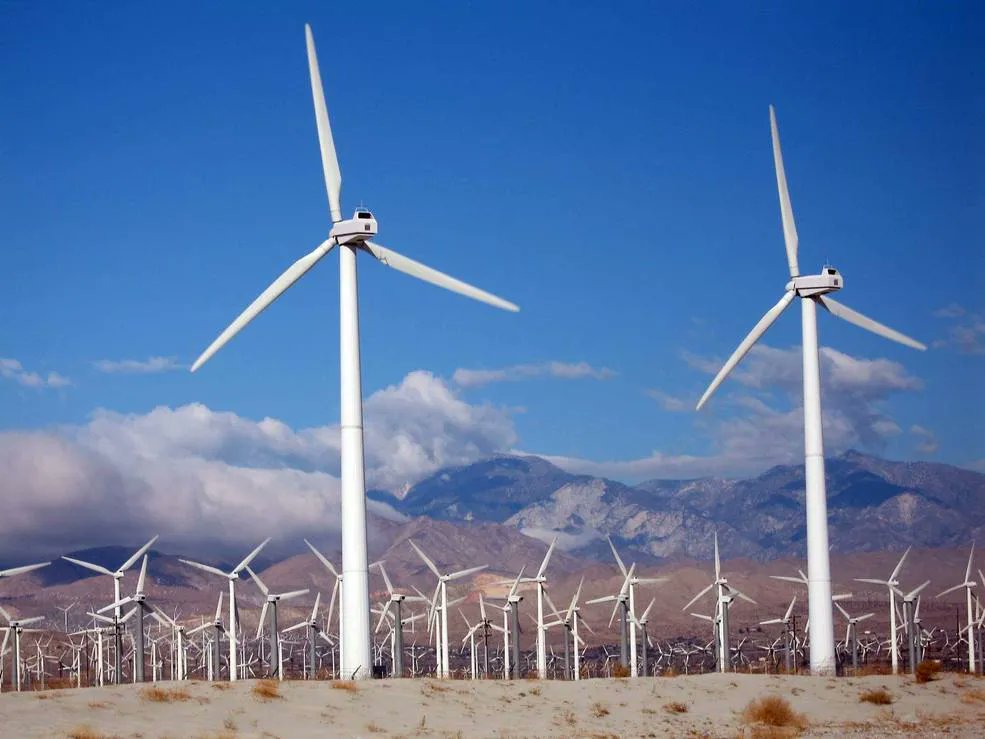Mars might not be the first place you would think of when thinking about where wind power might be useful. It has dust storms similar in scale to anything that the Earth can muster, and they’ve been responsible for the death of lots of the technology we’ve sent to the Red planet over the years. However, the strength of those storms is only enough to lift some dust particles into the air, which eventually shrouds that technology’s solar panels. Scientists have thought that it doesn’t really have enough oomph to be useful for anything. However, a new paper calls that assumption into question and shows that wind power could be useful on Mars.
There are a few caveats in that statement, though. One is that this research is based on climate models rather than actual wind data at many locations. Another is that it would potentially only be helpful in particular locations, though those locations are some of the more scientifically exciting locales anyway.
Scientific interest is one of the main driving forces of Martian exploration efforts. The tantalizing prospect of potentially finding extinct (or extant) life on one of our sister planets has been the dream of generators of space explorers. Most of those explorers want to push for a human mission to do the most amount of science possible in the shortest amount of time – robots just aren’t quite as efficient as human explorers.
But to have a human mission, there has to be enough power at the mission site to provide life support and meet basic mission needs. In most of the scientific literature, those needs are met by two power sources – nuclear and solar.
Solar is one of the most common power sources on Mars, hence why so many missions fall prey to the inevitable dust covering blocking their solar panels. But it does have some distinct disadvantages. It is only available for a certain percentage of the day, and those percentages vary based on the location and time of the Martian year. Sending the necessary power storage capacity to Mars to support a human-crewed mission off of solar power alone is extraordinarily expensive, so an alternative source of baseline power is needed.
Nuclear fills that void nicely on the Red Planet and on Earth. However, while humanity has operated small-scale nuclear reactors on other planets before, having one large enough to provide baseline power for a crewed mission is another thing entirely. There are plenty of dangers in operating one, especially in the conditions such as that on the Martian surface, let alone the unknowns of how to land one on its surface in the first place.
As such, an alternative baseline power source would be helpful. Wind has largely been discounted because of the general impression that the Martian atmosphere is too spare to provide the necessary power. But research into how to get the most out of wind power here on Earth has resulted in some technological improvements that could make it a more viable power source on Mars.
First, it would be helpful to understand how much power the wind on Mars provides. To do so, researchers from NASA, UC Boulder, and elsewhere turned to the Mars Global Climate Model (GCM). The GCM predicts wind speeds over the Martian surface as well as the density of that wind. From there, the researchers could calculate the power it supplies, on average, at least.
They also make several interesting points to consider when thinking about wind farms on Mars. First – wind speeds increase dramatically even 50 m off the ground on Mars. So, if any future mission intends to use wind power, it’s better to build tall turbines rather than ones that are closer to the ground, even if that does require overcoming some additional engineering challenges.
Credit – Scott Manley YouTube Channel
Another is that wind offers a good foil for solar power on the Red Planet. For example, solar radiation decreases significantly during dust storms, but wind power increases during those times. Also, longer nights during winter on the Red Planet cause wind power to overtake solar as a potential power source.
Notably, that second point is true for mid- to polar- latitudes, where some of the most interesting scientific sites (i.e., those containing water) are located. So, for bases situated there, a combination of solar and wind energy is the optimal safe mix of power, without the need for potentially dangerous nuclear at all.
Utilizing an underappreciated resource, such as wind on Mars, can turn heads in the space exploration community. But humanity will need every ounce of power it can possibly get from the least amount of weight possible if it genuinely intends to send people to Mars. This study is another step toward understanding the best way to do that.
Learn More:
Hartwick et al. – Assessment of wind energy resource potential for future human missions to Mars
UT – Without Water and Life, Geology on Mars is Driven by the Wind
UT – Dust Devils and Strong Winds Produce the Constant Haze on Mars
UT – Phoenix’s Telltale Tells All About Winds and Weather on Mars
Lead Image:
Wind farm on Earth.
Credit – Public Domain Images from Pixabay

